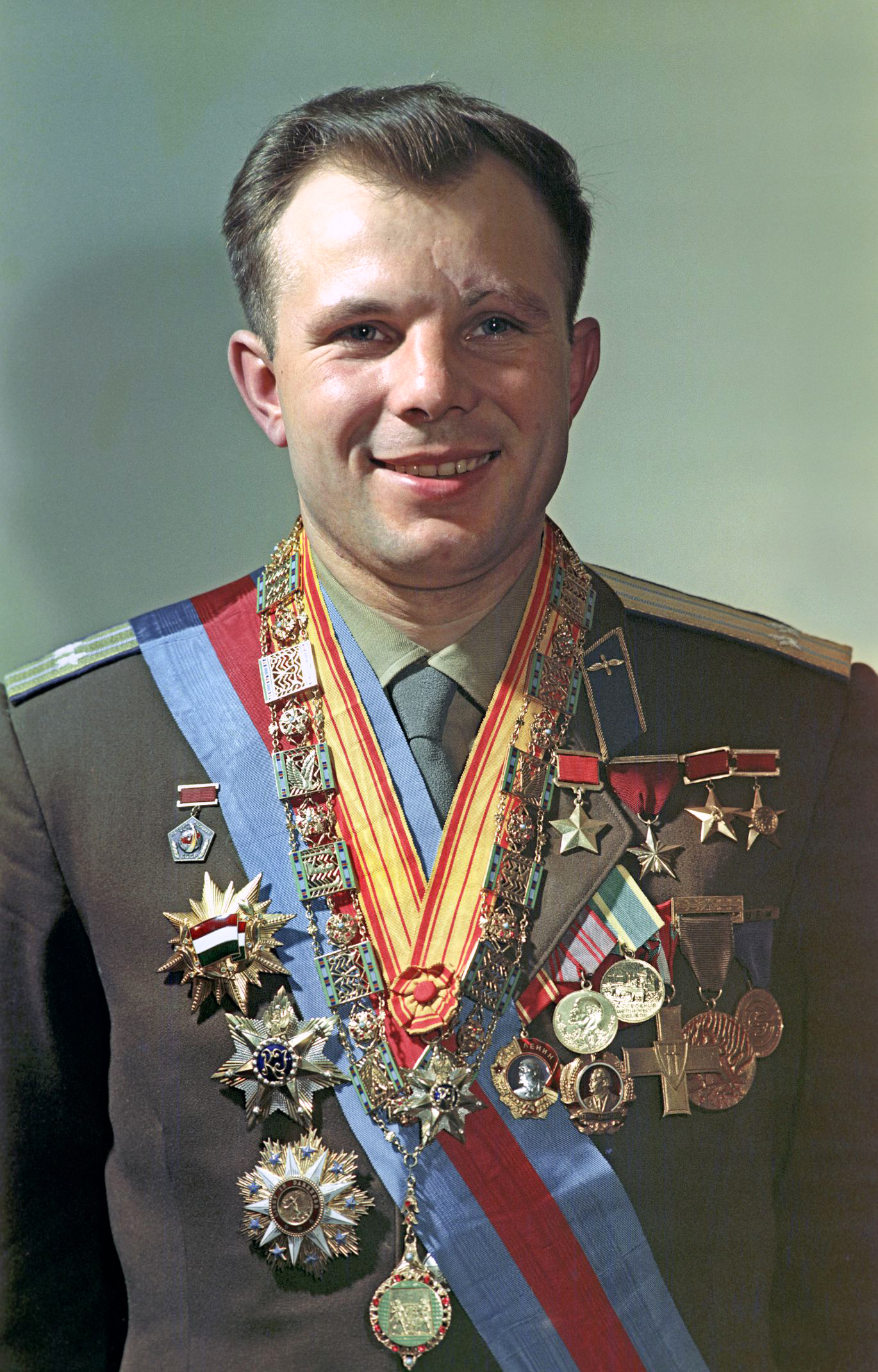
14 April 1961: Gagarin is awarded the title Hero of the Soviet Union.
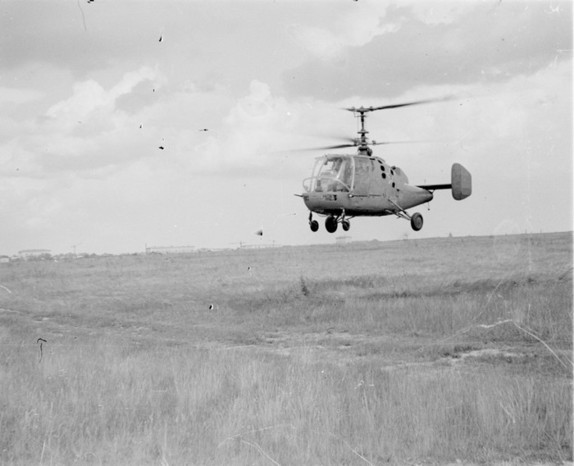
 14 April 1953: Dmitry Konstantinovich Efremov, chief test pilot for the Kamov Design Bureau, made the first flight of the prototype Kamov Ka-15 helicopter.
14 April 1953: Dmitry Konstantinovich Efremov, chief test pilot for the Kamov Design Bureau, made the first flight of the prototype Kamov Ka-15 helicopter.
The Ka-15 was a single-engine, two-place, light helicopter, flown by a single pilot. It used two fully-articulated, three-bladed, contra-rotating coaxial rotors. The helicopter had two vertical fins mounted at the ends of a horizontal stabilizer, and four-wheeled fixed landing gear.
The fuselage of the Ka-15 was 6.26 meters (20 feet, 6.5 inches) long. The main rotors’ diameter was 9.96 meters (32 feet, 8.1 inches), and the overall height of the the helicopter was 3.35 meters (10 feet, 11.9 inches). The span of the horizontal stabilizer and vertical fins were 2.85 meters (9 feet, 4.2 inches). The Ka-15 had an empty weight of 996 kilograms (2,196 pounds), normal takeoff weight of 1,360 kilograms (2,998 pounds), and maximum takeoff weight (MTOW) of 1,460 kilograms (3,219 pounds).
The rotors turn at 333 r.p.m. The upper rotor turned clockwise, as seen from above. (The advancing blade is on the left), and the lower blades turn counter-clockwise (their advancing blades are on the right). The area of the main rotor disc was 155.83 square meters (1,677.29 square feet) with a solidity ratio of 3% per rotor. (This is the lowest coefficient of disc area of any helicopter.) Each main rotor blade was trapezoidal, with a theoretical chord at the axis of rotation of 300 millimeters (11.8 inches), narrowing to 100 millimeters (3.9 inches) at the blade tip. The blades incorporated 12° of negative twist.
![]() The Ka-15 was powered by a single air-cooled, supercharged 10.131 liter (618.234 cubic inches) Ivchenko AI-14V nine-cylinder radial engine with a compression ratio of 5.9:1. The engine was rated at 188 kilowatts (252 horsepower). It weighed approximately 200 kilograms (441 pounds).
The Ka-15 was powered by a single air-cooled, supercharged 10.131 liter (618.234 cubic inches) Ivchenko AI-14V nine-cylinder radial engine with a compression ratio of 5.9:1. The engine was rated at 188 kilowatts (252 horsepower). It weighed approximately 200 kilograms (441 pounds).
The helicopter could carry a single passenger or 364 kilograms (802 pounds) of cargo. (Interestingly, the contemporary single main rotor/tail rotor Mil Mi-1 helicopter required 575 horsepower to lift the same payload as the Ka-15.)
The Ka-15 had a cruise speed 120 kilometers per hour (75 miles per hour) and maximum speed 155 kilometers per hour (96 miles per hour). The service ceiling was 3,500 meters (11,483 feet). It could hover out of ground effect (HOGE) at 600 meters (1,969 feet). The helicopter had a normal range of 278 kilometers (173 miles) and maximum range of 520 kilometers (323 miles).
The performance of the Ka-15 was better than had been predicted. After several years of testing, the Ka-15 entered production in 1956. It was the first mass-produced coaxial helicopter, with approximately 375 being built by Aircraft Factory No. 99 at Ulan-Ude, the capitol city of the Buryat-Mongolian Autonomous Soviet Socialist Republic.
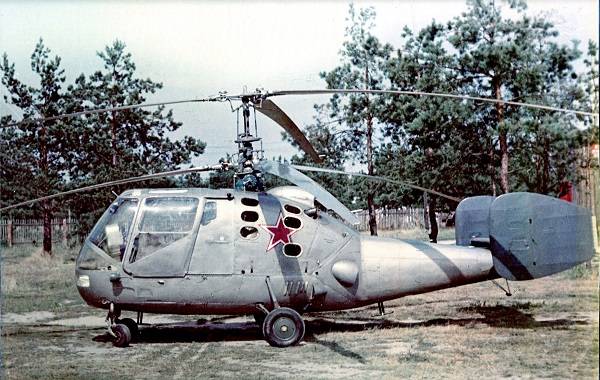
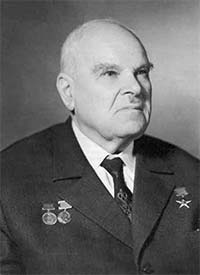
In a coaxial rotor system, one rotor is placed above the other, with the drive shaft for the upper rotor inside the hollow drive shaft of the lower. As in tandem rotor helicopters, each contra-rotating rotor counteracts the torque effect of the other. There is no anti-torque rotor (tail rotor) required. In helicopters using a tail rotor, as much as 30% of engine power is required to drive the tail rotor. With contra-rotating rotors, all of the engine’s power can be used to provide lift and thrust.
A second benefit of a coaxial rotor is that the dissymetry of lift of each rotor is also canceled out. There is no translating tendency while in a hover, and higher forward speeds are possible because the effect of retreating blade stall is reduced. A helicopter with coaxial rotors is more compact than a similar helicopter with tandem rotors. This makes it useful for operations in confined areas or aboard ships.
Nikolai Ilich Kamov was previously known for his autogyro designs, which were first produced in 1929. These included the Tsentralniy Aerogidrodinamicheskiy Institut (Central Aero-Hydrodynamic Institute) TsAGI A-7, which was the first armed autogyro. The Kamov Design Bureau was established 7 October 1948 at Lyubertsy, near Moscow, Russia.
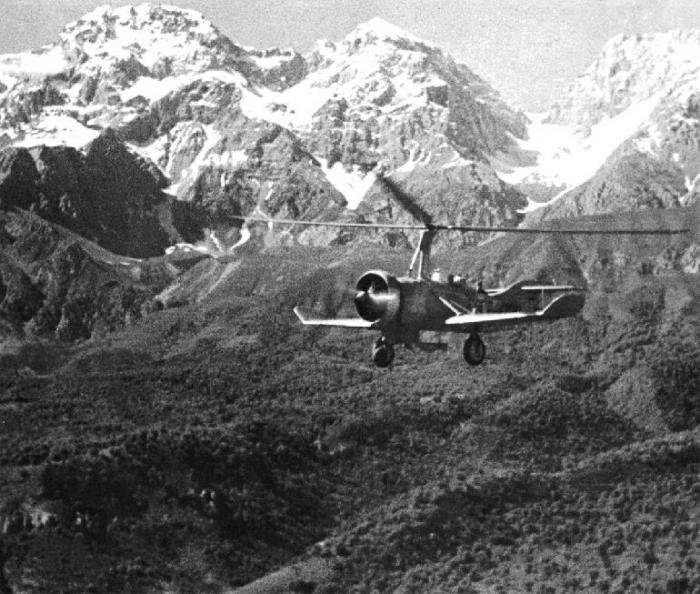
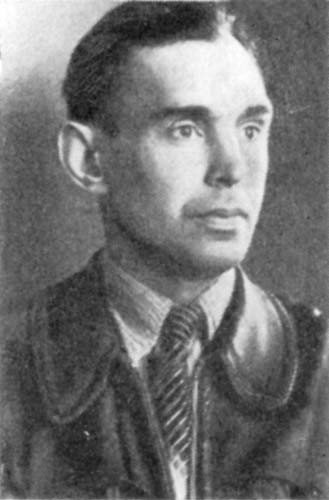
Ефремов Дмитрий Константинович (Dmitry Konstantinovich Efremov) was born at Moscow, in the Russian Socialist Federative Soviet Republic, 30 October 1920.
In 1941, Efremov was a cadet at the Bauman Aero Club. He entered the Red Army the same year and was sent to the Saratov Military Aviation Gliding School, at Samara, Kuybyshev, Russia, U.S.S.R., for training as a military glider pilot. During the Great Patriotic War, Efremov flew gliders behind enemy lines. He was next assigned to an experimental test squadron of of the Airborne Forces, and then as a pilot instructor at the aviation school of the Airborne Forces in Slavogorod, Altai Krai, Russia, U.S.S.R.
Efremov contracted tuberculosis and in January 1948, was discharged from the Red Army. He was employed as a senior technician at TsAGI, and in November of that year went to work as a mechanic at Kamov OKB. He made the first flight of the Kamov Ka-10, and was then sent to test pilot school.
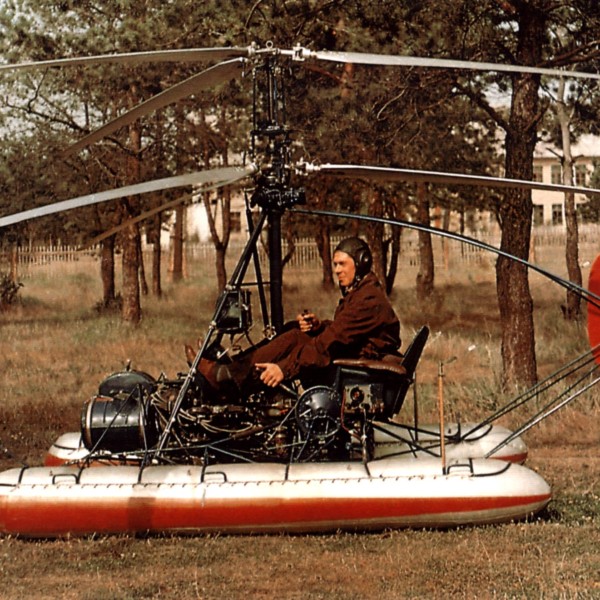
Efremov returned to Kamov OKB after completing test pilot school and was soon promoted the the design bureau’s chief pilot. He made the first flights of the Ka-15, Ka-18 and Ka-25 helicopters.
After transitioning to the Antonov An-8 and Ilyushin Il-18 turboprop transports to gain flight experience in larger transport airplanes, Efremov made the first flight of the Kamov Ka-22 gyrodyne prototype, 15 August 1959. On 7 October 1961, with V. V. Gromov, he flew the Ka-22 to a Fédération Aéronautique Internationale (FAI) World Record for Speed Over a 15km/25km Straight Course of 356.3 kilometers per hour (221.4 miles per hour),¹ and on 24 November 1961, set seven world records for payload to altitude.²
On 28 February 1962, Efremov and a flight test crew were conducting a long-distance test flight of a Kamov Ka-22M gyrodyne prototype, 01-01, 63972, from Tashkent, Uzbekistan, to Kzyl-Orda, Kazakhstan. During an intermediate refueling stop in Turkestan, mechanics found a loose or missing retaining nut for the left support of the synchronizing shaft. The problem was repaired and the flight continued.
While on approach to the main runway at the Dzhusaly airport, the gyrodyne suddenly banked left, entered a left spiraling turn, and, in an inverted dive, crashed on the runway. The Ka-22 exploded and burned. Dmitry Konstantinovich Efremov and seven men of his flight test crew were killed.
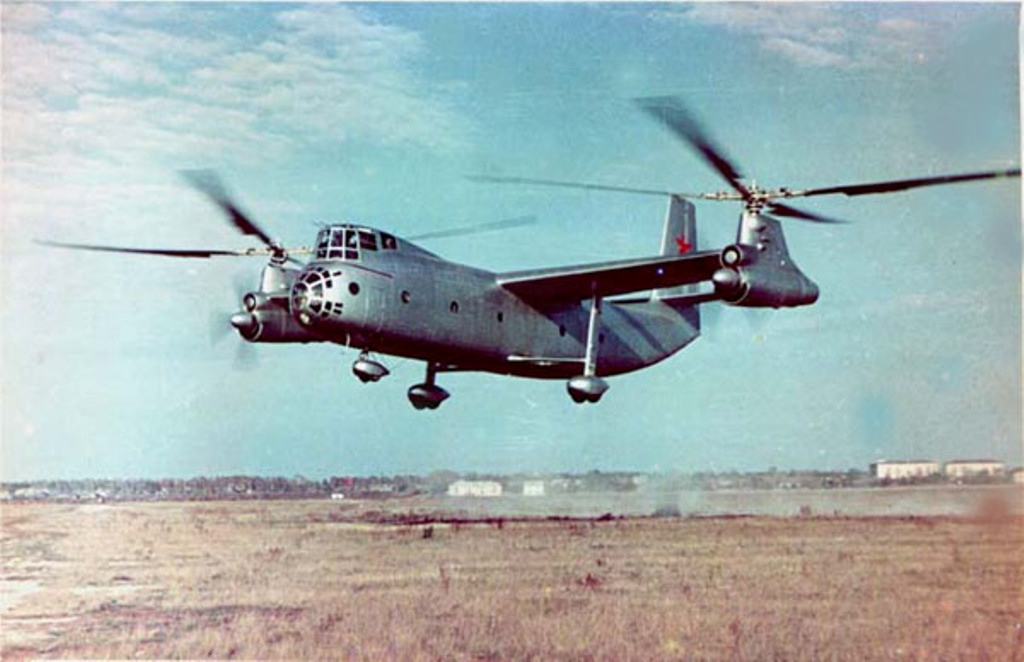
TDiA would like to thank regular reader Mike for suggesting this topic.
¹ FAI Record File Number 13226
² FAI Record File Numbers 13221, 13222, 13223, 13224, 13227 and 13228
© 2019, Bryan R. Swopes
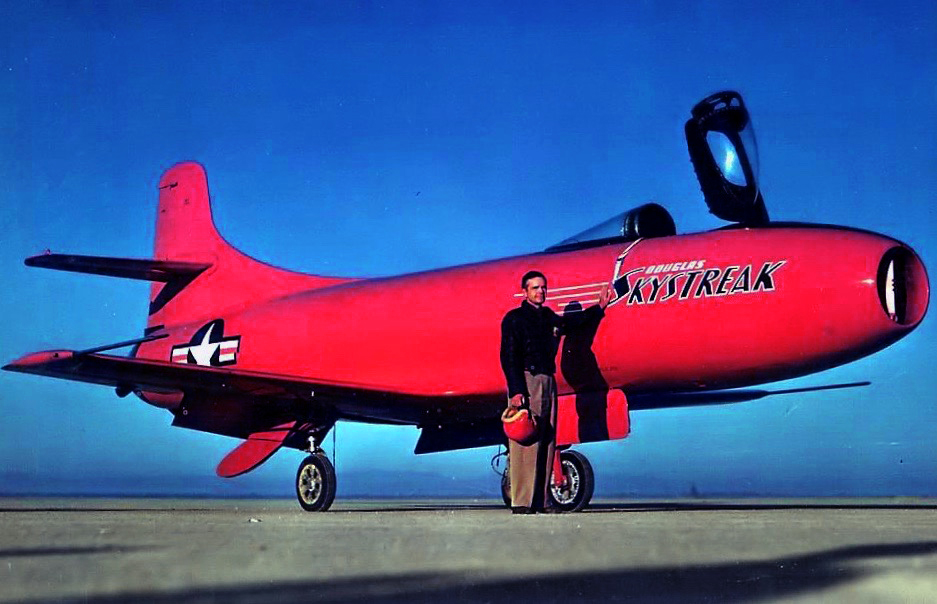
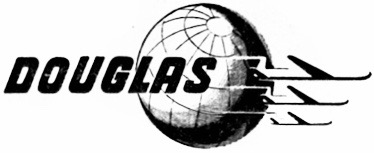 14 April 1947: Douglas Aircraft Company test pilot Eugene Francis (“Gene”) May took the Number 1 U.S. Navy/NACA/Douglas D-558-I Skystreak high-speed research aircraft, Bu. No. 37970, for its first flight at at Muroc Army Airfield. The aircraft had been transported from the Los Angeles factory to Muroc by truck.
14 April 1947: Douglas Aircraft Company test pilot Eugene Francis (“Gene”) May took the Number 1 U.S. Navy/NACA/Douglas D-558-I Skystreak high-speed research aircraft, Bu. No. 37970, for its first flight at at Muroc Army Airfield. The aircraft had been transported from the Los Angeles factory to Muroc by truck.
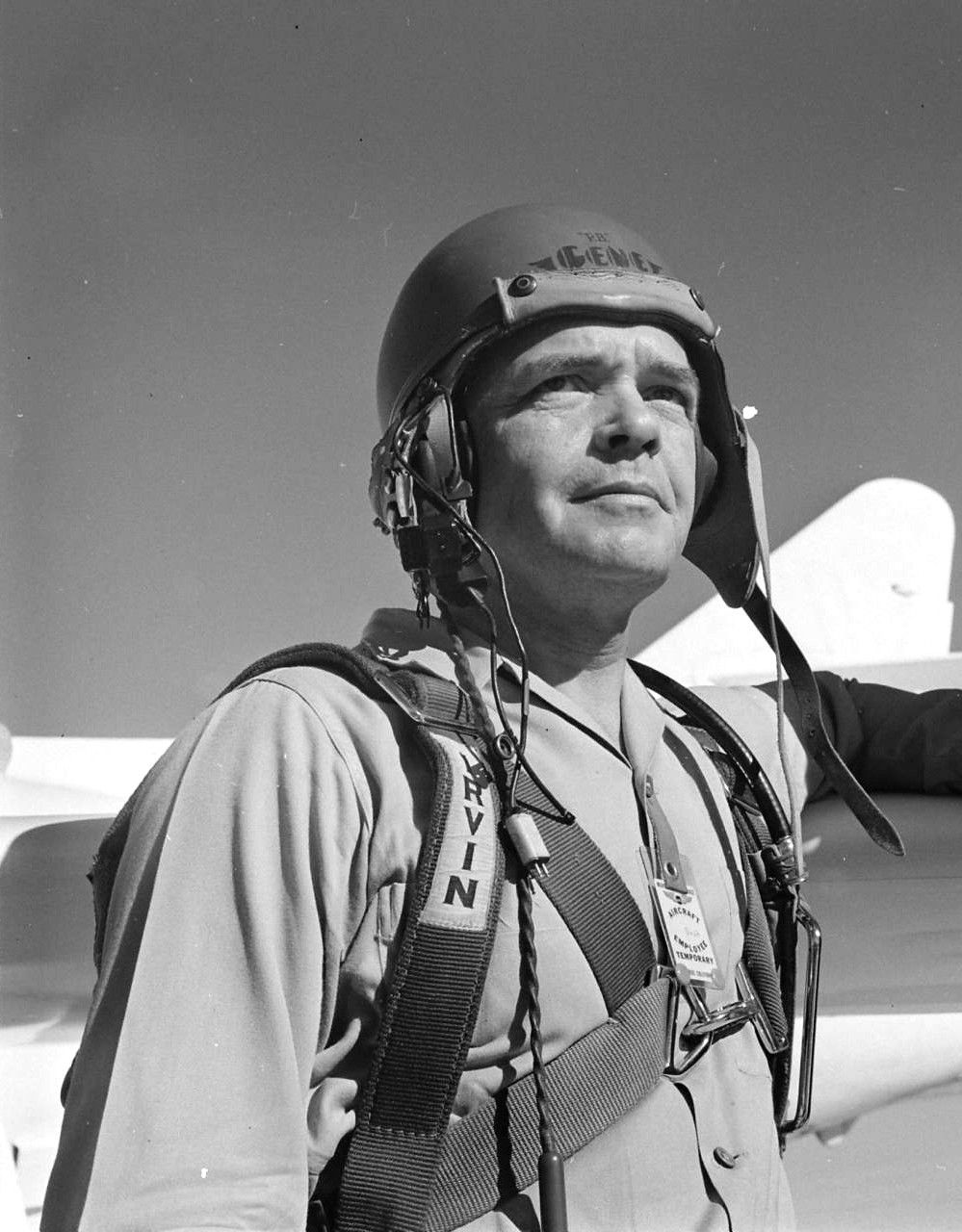
 The Skystreak was a joint United States Navy/National Advisory Committee for Aeronautics (NACA) research aircraft designed to explore flight at high subsonic speed. The Phase I Skystreak was designed by a team led by Douglas Chief Engineer Edward Henry Heinemann. Flight testing was conducted at the NACA High Speed Flight Station at Muroc Army Airfield (later known as Edwards Air Force Base). Three D-558-Is were built, followed by the Phase II, swept-wing Mach 2 D-558-II Skyrocket rocketplane.
The Skystreak was a joint United States Navy/National Advisory Committee for Aeronautics (NACA) research aircraft designed to explore flight at high subsonic speed. The Phase I Skystreak was designed by a team led by Douglas Chief Engineer Edward Henry Heinemann. Flight testing was conducted at the NACA High Speed Flight Station at Muroc Army Airfield (later known as Edwards Air Force Base). Three D-558-Is were built, followed by the Phase II, swept-wing Mach 2 D-558-II Skyrocket rocketplane.
The D-558-I carried extensive flight test instrumentation for its time. The wings had 400 orifices for air pressure sensors. During the test series, aircraft stability in the range of 0.82–0.99 Mach was investigated. One of the Skystreaks may have briefly exceeded Mach 1 as it came out of a dive.
Unlike some of the other experimental high speed aircraft of the time, it took off from the ground under its own power rather than being carried aloft by a mother ship. While those other aircraft could briefly reach much higher speeds, the D-558-I was able to fly for extended periods in the high-subsonic range, providing scientists and engineers with a tremendous amount of data.
The research airplane was a single-place, single-engine, low-wing monoplane with retractable tricycle landing gear. The fuselage of the D-558-I was constructed of an aluminum framework covered with sheet magnesium. It was designed for an ultimate load factor of 18 gs. The wings and tail surfaces were aluminum. The airplane was painted scarlet (not orange, like its contemporary, the Bell X-1) and was known as “the crimson test tube.”
The D-558-I was 35 feet, 1.5 inches (10.706 meters) long with a wingspan of 25 feet, 0 inches (7.620 meters) and overall height of 12 feet, 1.6 inches (3.698 meters). Gross weight 10,105 pounds (4,584 kilograms). It carried 230 gallons (871 liters) of kerosene in its wings.
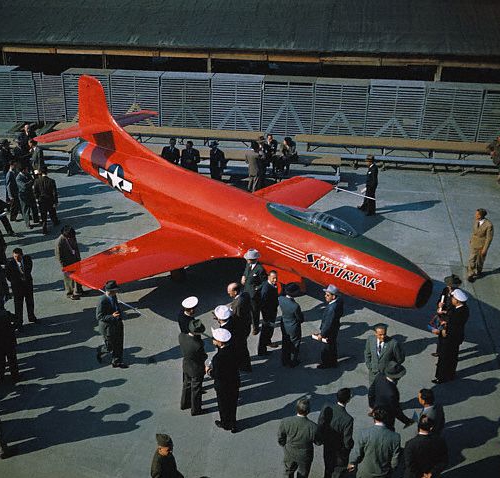
 The D-558-I was powered by a single Allison J35-A-11 turbojet engine. The J35 was a single-spool, axial-flow turbojet with an 11-stage compressor section, 8 combustion chambers and single-stage turbine. The J35-A-11 was rated at 5,000 pounds of thrust (22.24 kilonewtons). The engine was 12 feet, 1.0 inches (3.683 meters) long, 3 feet, 4.0 inches (1.016 meters) in diameter and weighed 2,455 pounds (1,114 kilograms).
The D-558-I was powered by a single Allison J35-A-11 turbojet engine. The J35 was a single-spool, axial-flow turbojet with an 11-stage compressor section, 8 combustion chambers and single-stage turbine. The J35-A-11 was rated at 5,000 pounds of thrust (22.24 kilonewtons). The engine was 12 feet, 1.0 inches (3.683 meters) long, 3 feet, 4.0 inches (1.016 meters) in diameter and weighed 2,455 pounds (1,114 kilograms).
Bu. No. 37970 made 101 of the 228 Phase I flights. It set a world speed record 1,031.178 kilometers per hour (640.744 miles per hour), flown by Commander Turner F. Caldwell Jr., U.S. Navy, 20 August 1947.¹ (Major Marion E. Carl, U.S. Marine Corps, flew the second Skystreak, Bu. No. 37971, to 1,047.356 kilometers per hour (650.797 miles per hour),² breaking Caldwell’s record.)
After Douglas completed the contractor’s test series, the Number 1 Skystreak was turned over to the NACA High Speed Flight Station and designated NACA 140. It was not as highly instrumented as the Number 2 and Number 3 Skystreaks and was not flown, but was used as a source for spare parts for the other D-558-Is.
Douglas D-558-I Skystreak Bu. No. 37970 is on display at the National Naval Aviation Museum, NAS Pensacola, Florida.
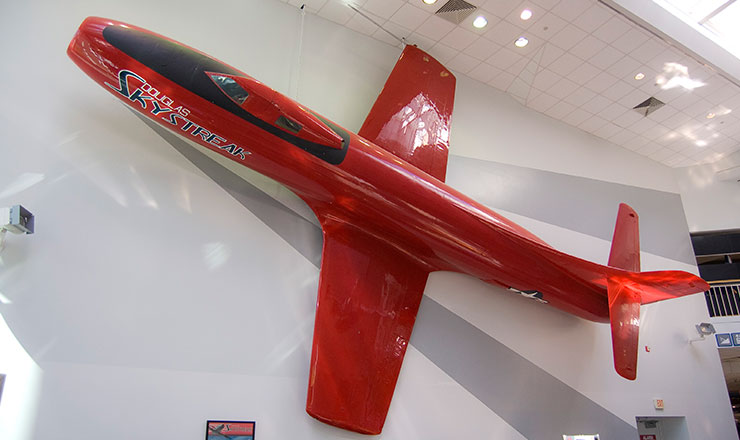
¹ FAI Record File Number 9864
² FAI Record File Number 9865
© 2019, Bryan R. Swopes
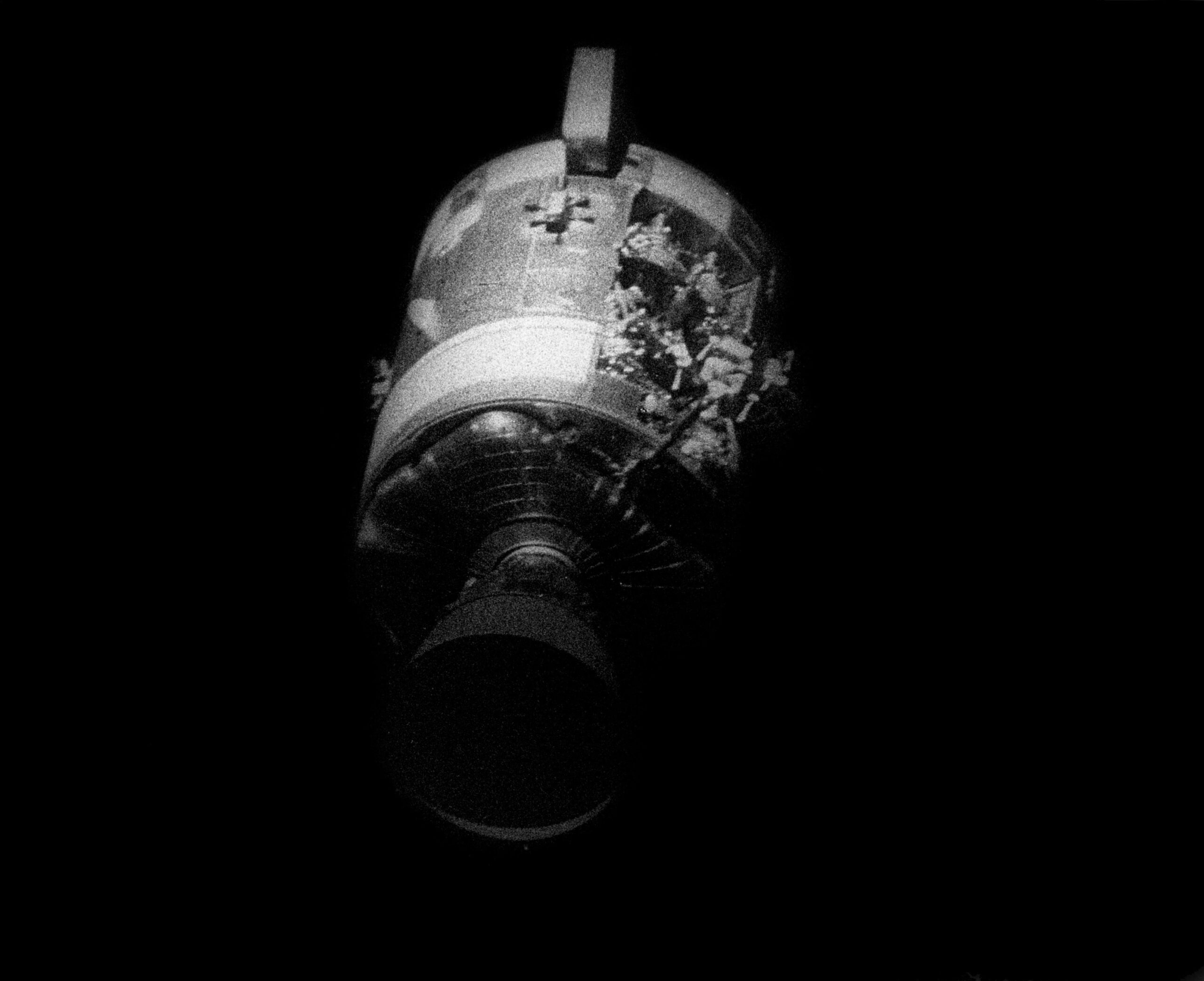
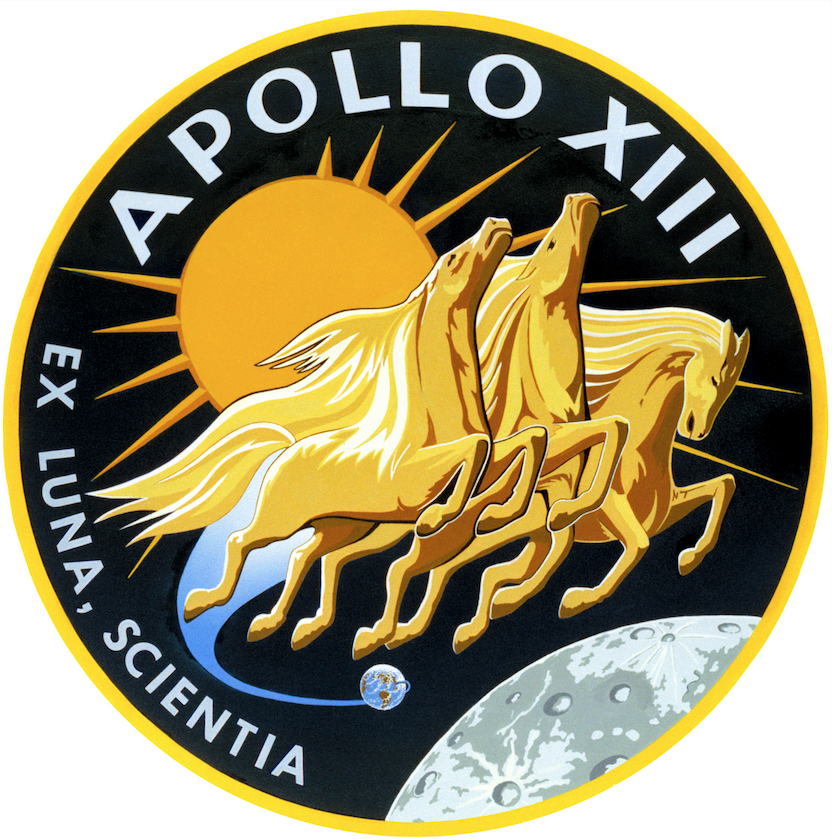 13 April 1970: At 10:07:53 p.m. Eastern Standard Time (mission elapsed time 55:54:53), while Apollo 13 and its crew, James A. Lovell, Jr., John L. Swigert and Fred W. Haise, were approximately 200,000 miles (322,000 kilometers) from Earth enroute to a landing at the Fra Mauro Highlands on The Moon, an internal explosion destroyed the Number 2 oxygen tank¹ in the spacecraft’s Service Module. The Number 1 tank was also damaged. Two of three fuel cells that supplied electrical power to the spacecraft failed.
13 April 1970: At 10:07:53 p.m. Eastern Standard Time (mission elapsed time 55:54:53), while Apollo 13 and its crew, James A. Lovell, Jr., John L. Swigert and Fred W. Haise, were approximately 200,000 miles (322,000 kilometers) from Earth enroute to a landing at the Fra Mauro Highlands on The Moon, an internal explosion destroyed the Number 2 oxygen tank¹ in the spacecraft’s Service Module. The Number 1 tank was also damaged. Two of three fuel cells that supplied electrical power to the spacecraft failed.
Jack Swigert radioed Mission Control: “I believe we’ve had a problem here.” ²
Mission Control: “This is Houston. Say again, please.”
Jim Lovell: “Houston, we’ve had a problem. Main B Bus undervolt.”
With oxygen supplies depleted and power failing, the lunar landing mission had to be aborted, and the three-man crew evacuated the Command Module and took shelter in the Lunar Module.
This was a life-threatening event.
The story of Apollo 13 and its crew and their journey home is well known. The 1995 Ron Howard/Universal Pictures film, “Apollo 13,” takes some artistic license, but is generally accurate and realistic.
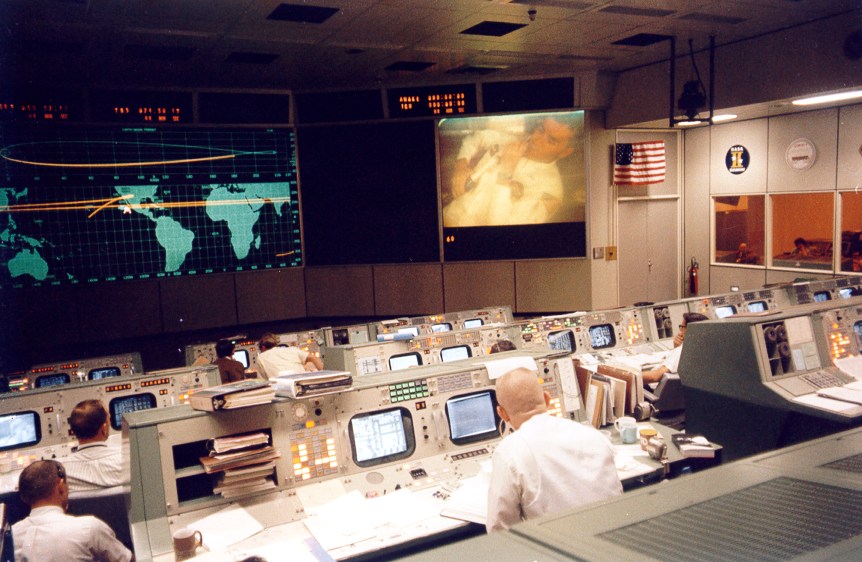
Five years before Apollo 13 was launched, an engineering decision had been made to increase the spacecraft electrical system from 28 volts to 65 volts. This required that every electrical component on the vehicle had to be changed to accommodate the increased power. The after-accident investigation found that the team that designed the cooling fans for the oxygen tanks was never informed of the change.
During the actual flight, the wiring inside the tank heated to approximately 1,000 °F. (538 °C.), and in the pressurized pure oxygen, the insulation caught fire. The tank, originally installed on Apollo 10, had been dropped when it was removed for modification. It was repaired and later used on Apollo 13, however, it had been weakened by the damage. The extreme pressure caused by the heat of the burning electrical wiring in the containment caused the tank to rupture.
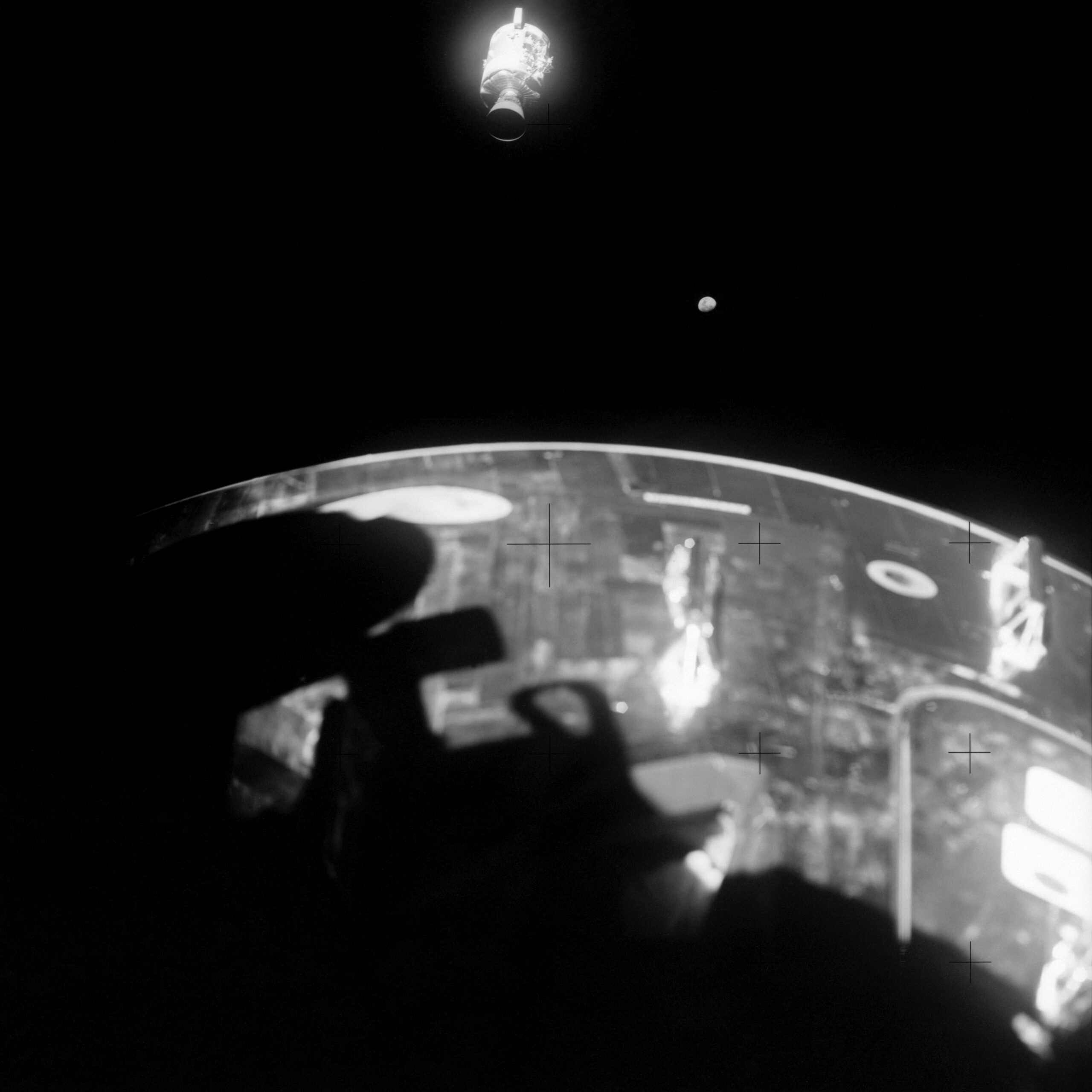
¹ Serial number 10024X-TA0009
² The official mission transcript attributes this statement to Jim Lovell, however, in Lovell’s recollection, it was made by Swigert.
© 2017, Bryan R. Swopes
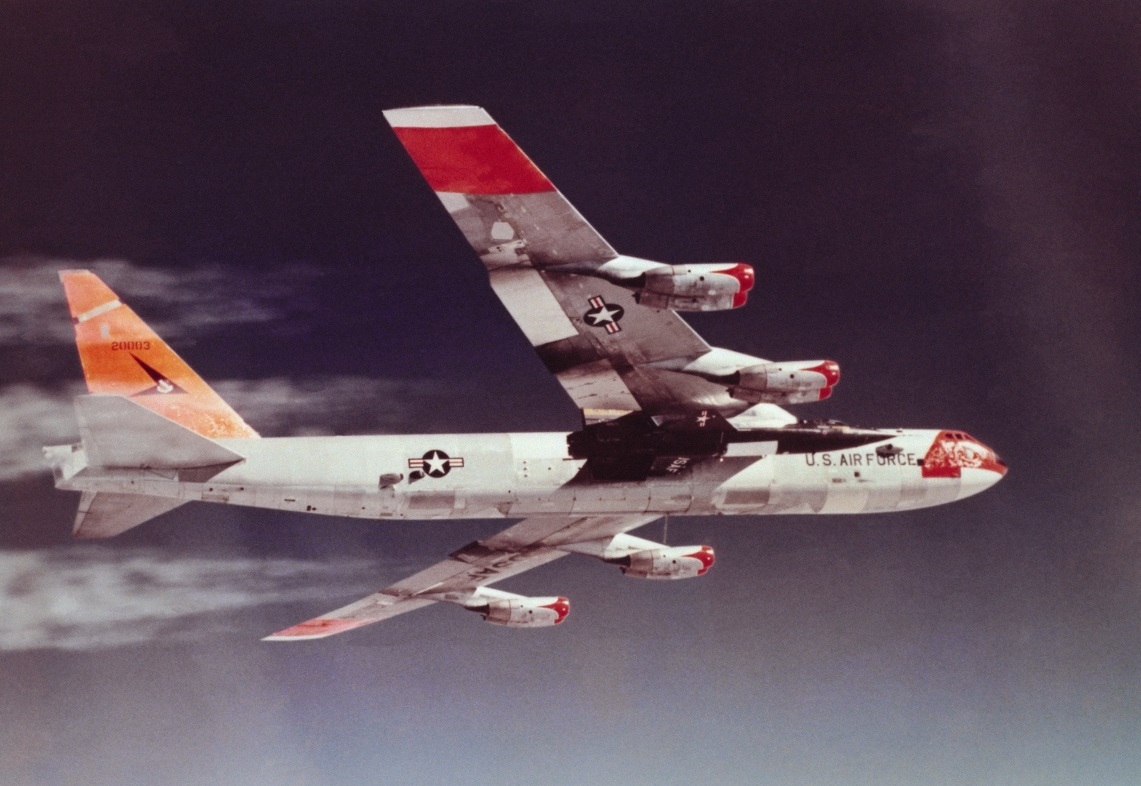
13 April 1960: Major Robert M. White, USAF, was the first U.S. Air Force test pilot to fly an X-15.
Carried aloft by a Boeing NB-52A Stratofortress, serial number 52-003, the first of three X-15 hypersonic research aircraft, 56-6670, was airdropped at 0915 above Rosamond Dry Lake. Major White ignited the two Reaction Motors XLR-11 rocket engines and with a burn time of 4 minutes, 13.7 seconds, the X-15 accelerated to Mach 1.9 (1,254 miles per hour/2,018 kilometers per hour) and reached 48,000 feet (14,630 meters). Both numbers were slightly short of the planned Mach 2.0 (1,320 miles per hour/2,124 kilometers per hour) and 50,000 feet (15,240 meters).
After 8 minutes, 52.7 seconds, Bob White and the X-15 touched down at Edwards Air Force Base.
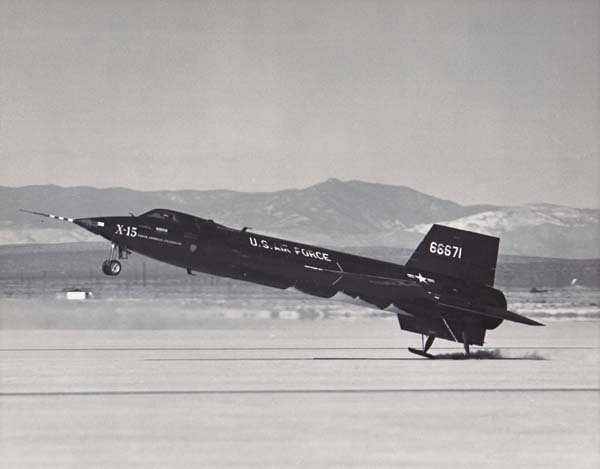
Over the next 32 months Bob White made 16 flights in the X-15. He was the first pilot to fly faster than Mach 4, Mach 5 and Mach 6. He flew it to Mach 6.04, 4,093 miles per hour (6,587 kilometers per hour) and 314,750 feet (95,936 meters), setting a Fédération Aéronautique Internationale (FAI) record for an altitude gain of 82,190 meters (269,652 feet).¹
White was one of six pilots ² awarded astronaut wings for his flights in the X-15.
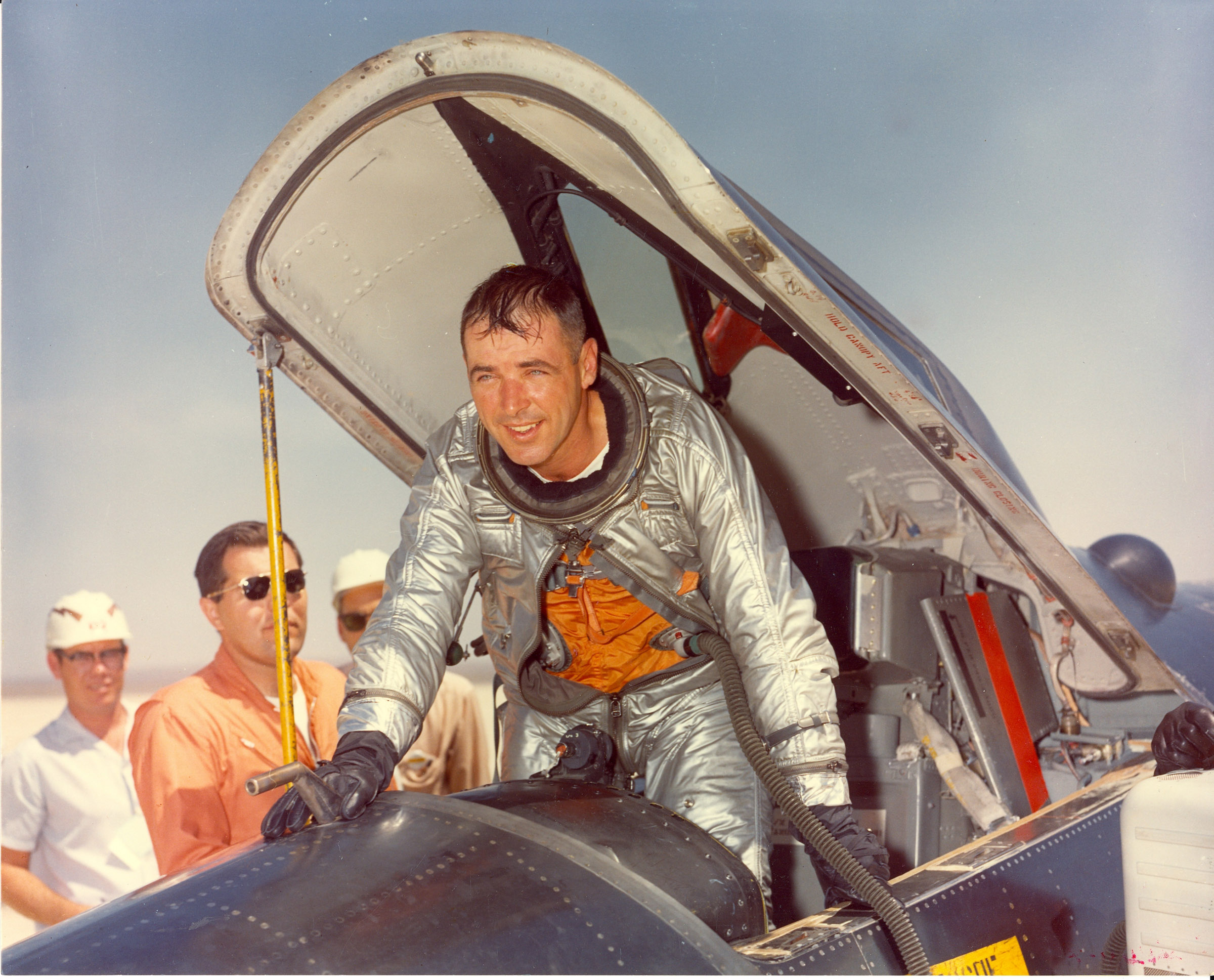
¹ FAI Record File Number 9604
² Joe Henry Engle, William J. (“Pete”) Knight, Robert A. Rushworth, Joseph Albert Walker, Robert Michael White, and Michael James Adams (posthumous)
© 2021, Bryan R. Swopes